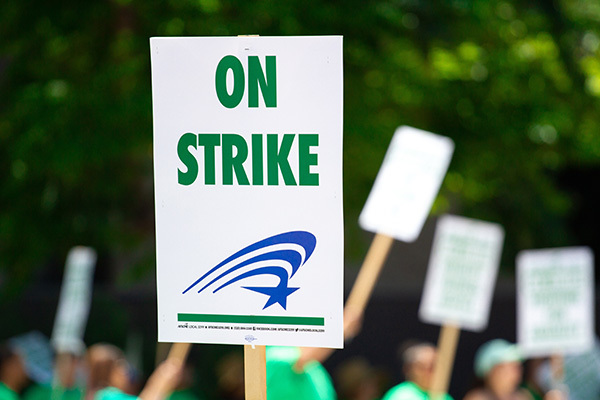Labor Challenges and Lessons
Navigating Labor Turbulence: Insights from Recent Strikes
The first quarter of 2019 will, unfortunately, be remembered as the quarter that quick service restaurant hourly employee turnover hit historic highs. Workforce Intelligence (formerly People Report) has tracked this key workforce indicator since 2004; through the Great Recession, the long slow recovery, and a steadily dropping unemployment rate. In our most recent Workforce Index, 70 percent of quick-service restaurant brands reported that hourly turnover increased. With a median of 158 percent rolling turnover, we have reached a point where this level of churn and disruption to the workplace is simply not sustainable.
Those operating challenges are tough enough, but the external pressures on wages, leave, healthcare coverage, and schedules are accelerating at the same time. In case you missed it, last month, a northeastern grocery chain, Stop N Shop, experienced a labor-backed campaign resulting in an 11-day strike by thousands of employees. Ultimately that ended with a contract and millions of dollars in losses that may never be recouped. The United Food and Commercial Workers (UFCW) claimed victory for workers and focused on the same issues that are lightning rods in restaurants.
We asked our partners at Align Public Strategies for any advice that we can share with operators. Managing Director, Joe Kefauver opines.
It should come as no surprise to anyone that the labor community will have a great deal to say about who will be the eventual Democratic nominee for president. And it should also come as no surprise that the candidates themselves know that same truth all too well. But that is not unusual – the labor community has been strongly aligned with the Democratic party for most of the last century. Candidates at all levels of government have worked hard for labor’s support. In the past, that hard work entailed supporting or opposing current legislative or regulatory proposals either in Congress, state legislatures, or city halls – or promising to if elected – essentially validating a candidate’s current or prospective voting record. The litmus test the labor community uses to determine one’s fidelity to the labor cause and the intensity of their commitment is changing rapidly.
That’s why the recent 11-day strike by 31,000 UFCW-member workers in three New England states is so important for brands to understand. First, the strike was ostensibly about better wages, pushing back against proposed cutbacks in healthcare and protections from the company’s increasing utilization of technology and automation. Those are the same issues the labor community uses to attack restaurant and retail employers. That is where the focus lies for the labor community and those industries are directly in their crosshairs. Secondly, outside of the collective bargaining pieces, the political aspects have to be understood. The UFCW essentially leveraged the work stoppage as a political forum for candidates to demonstrate their support of not only the issues the union was fighting for but for the strike itself. In only eleven days, five leading Democratic hopefuls – including Joe Biden – flew to New England and participated in rallies with striking workers. Even Joe Biden, the working man’s hero from Scranton, PA who has a 40-year record of supporting labor’s agenda, had to go to New England and kiss the ring.
Key Takeaways for Leading Restaurant Brands
What should leading restaurant brands take away from this?
First, the labor community got a big win on a lot of fronts and they will be looking to leverage that momentum into going after other national entry-level brands. That means any labor strife – either real or intentionally manufactured – will be cause for presidential-level attention. Candidates will be looking for ways to boost their labor bona fides, pulling TV cameras and reporters along with them. So, what should brands be doing? Pretty simple. First, be aware. Restaurants need to pay attention to the political process, follow the dialogue, and understand how their brand could be potentially pulled into that conversation. Secondly, be prepared. Be ready to instantly communicate when necessary to all appropriate stakeholder audiences. This includes employees, customers, elected officials, opinion leaders, and other community entities regarding the positive work environment in their organizations and their commitment to their employees and to the communities they serve. And lastly, if pressed, be candid. One mistake that hurt Stop & Shop was their recitation of nebulous financial claims about wage and benefit levels that didn’t quite meet the laugh test. It hurt their credibility and fueled the charges against their management style. Being engaged, being prepared, and being straightforward is the best defense against being the next Stop & Shop.
This update was created in part by Joe Kefauver, managing partner at Align Public Strategies
